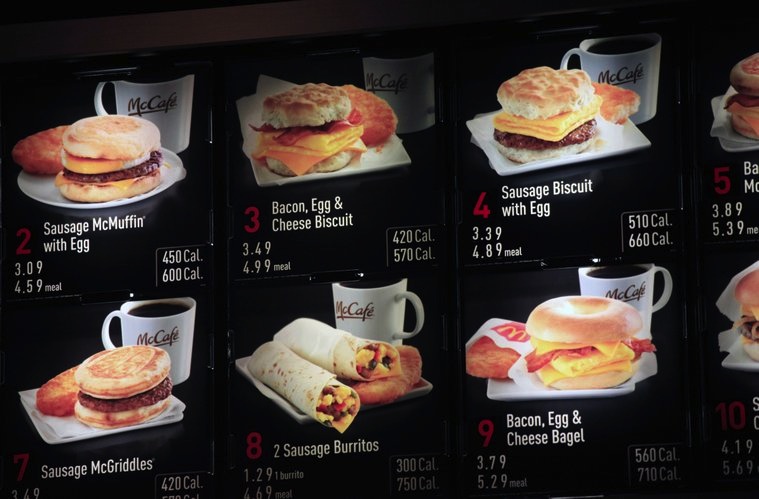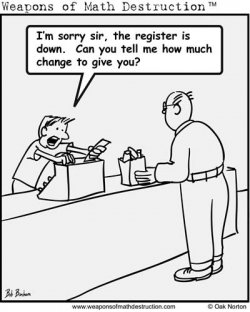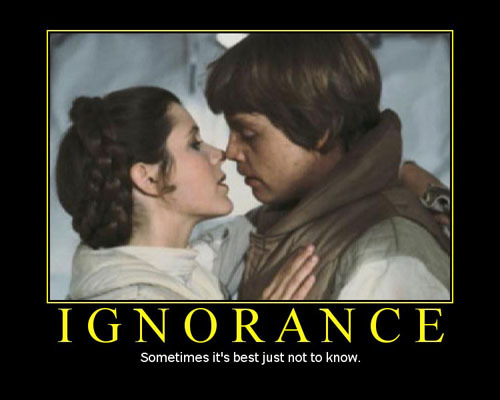
When Pam and I visited California last October, I noticed how restaurants always posted the number of calories in each food item on the menu. I really liked that. It definitely affected what I ordered. There were items I might have ordered but, upon seeing the calorie count, opted for something else. True, I was gonna buy an In and Out Burger no matter how many calories it had, because I wanted to see what all the fuss was about (and it was worth it). But for other foods, I appreciated knowing how it might affect my waistline.
This was a state law in California, as it is in some other states and cities (notably, New York City). Some people argue that it represents far too much intrusiveness by government, and there’s a point to be made there. Government defaults toward intrusiveness. But considering the healthcare costs of poor nutrition (diabetes, heart disease, etc.), some of which society inevitably picks up (with or without Obamacare), I approve of calorie counts.
Now I see that McDonald’s will begin including calorie counts in about 14,000 restaurants nationwide. For a while now, their website has posted a complete ingredient breakdown for all McDonald’s foods. Kudos to them. But now we’ll be able to see the calorie count while standing in the checkout line.
Not that McDonald’s has been the standard-bearer for healthy eating. That’s like recognizing Congress for its workplace politeness and sensitivity. McDonald’s knows, of course, that a national law is coming (no date has been set yet) when all larger chains must include calorie counts. So they are just getting out there ahead of the curve, trying to win low-cal brownie points. Yet, I applaude them.
The result may be that, the next time I go to McDonald’s, I look over the menu, note the calorie counts…and go right back out the door. Because I’m confronted with the glaring reality that everything I like isn’t good for me.
A mandated calorie count may also make restaurants more reluctant to introduce new high-calorie items. Imagine ad campaigns where restaurants brag about how FEW calories their foods have.
Now, if they could just include the salt content, too. As a person with Miniere’s disease, I carefully examine all food labels to check the sodium content, lest vertigo come knocking. This is crucial to my health. But you can’t include everything. A friend of mine is allergic to corn. You can’t ask restaurants to identify the amount of corn syrup and other derivatives used in every menu item. So, on a practical basis, I’m content just putting the calorie content. For everything else–you’re on your own. That seems reasonable.
Slate.com published a good article about this back in March 2011. However, the article mentioned several studies that show, in places where calorie counts were already mandatory, it hadn’t changed people’s eating habits. Especially in poor neighborhoods. People were consuming as many calories as before.
In one study, just over half of the people said they actually noticed the calorie information. (The same people, I assume, also walk in front of speeding cars.) Only 15% said it affected their choices. The latter 15% averaged 106 calories less than everyone else.
But hey–if only 15% of consumers use the calorie information, that’s a good start. Nothing is universal right off the bat.
I’m definitely, and proudly, in that 15%. And 15% of a population of 300 million–that’s 45 million people who pay attention. People who probably also–like me–examine food labels in grocery stores, and make buying decisions on that basis.
Changing eating habits won’t happen overnight. Educating people about the need to control caloric intake, and having the need actually sink into their skulls, will take a while. Perhaps the majority of folks will never catch on. But putting the information out there, in plain sight, is a good start. We can’t do much more than that. It ultimately comes down to people’s choices.
Unfortunately, it won’t suddenly make people start cooking more at home, or getting regular exercise. Sometimes it takes a heart attack to do that.



 Wow, this is interesting. According to the
Wow, this is interesting. According to the  Here’s something which makes me amused, in a carnal sort of way.
Here’s something which makes me amused, in a carnal sort of way.








